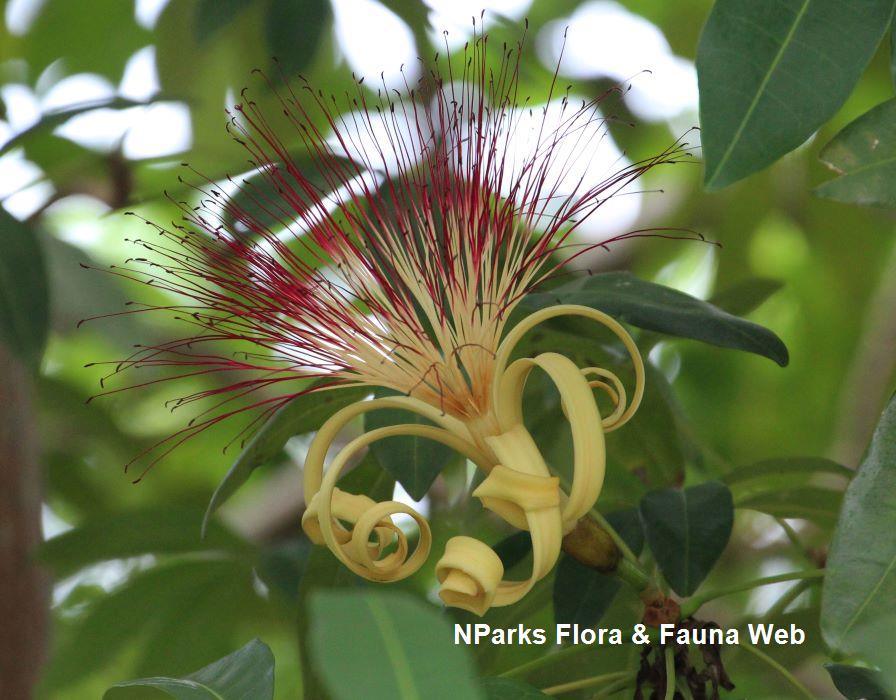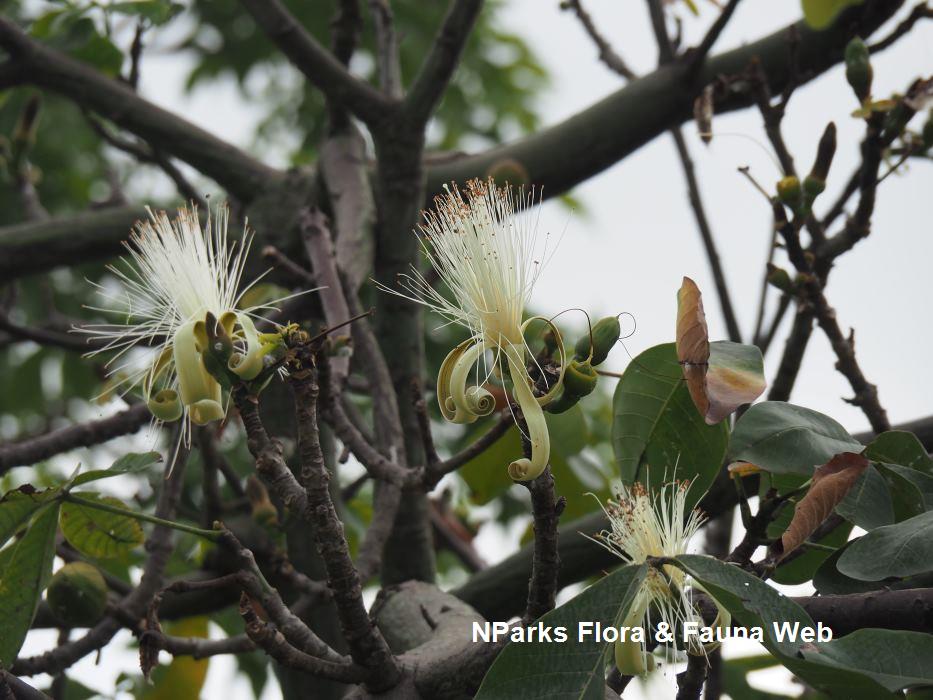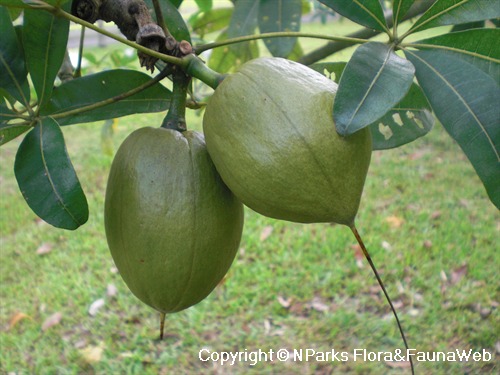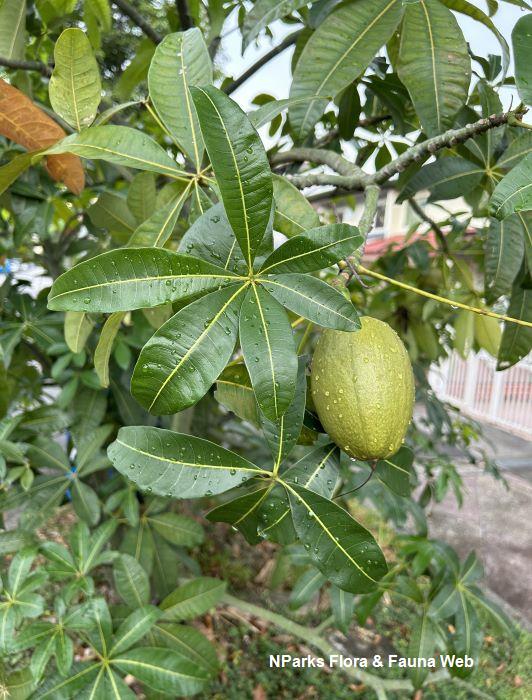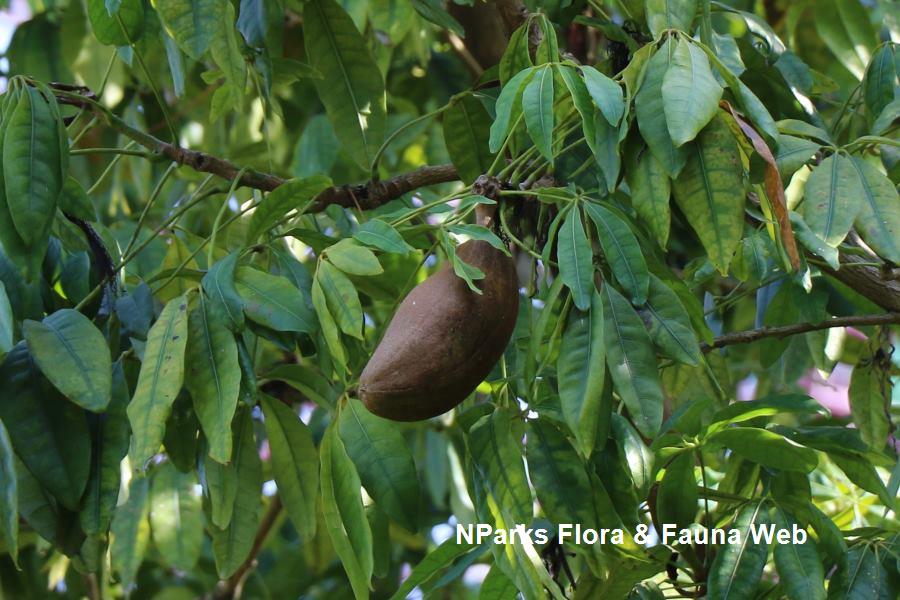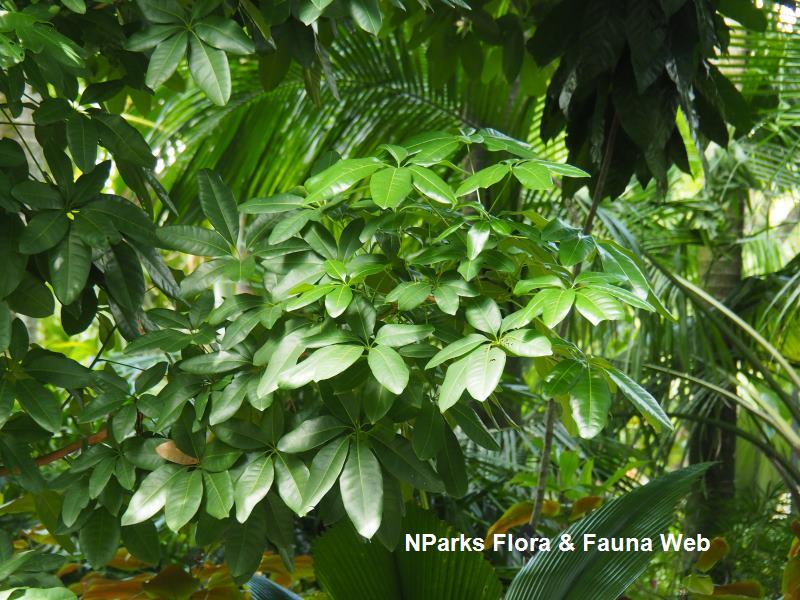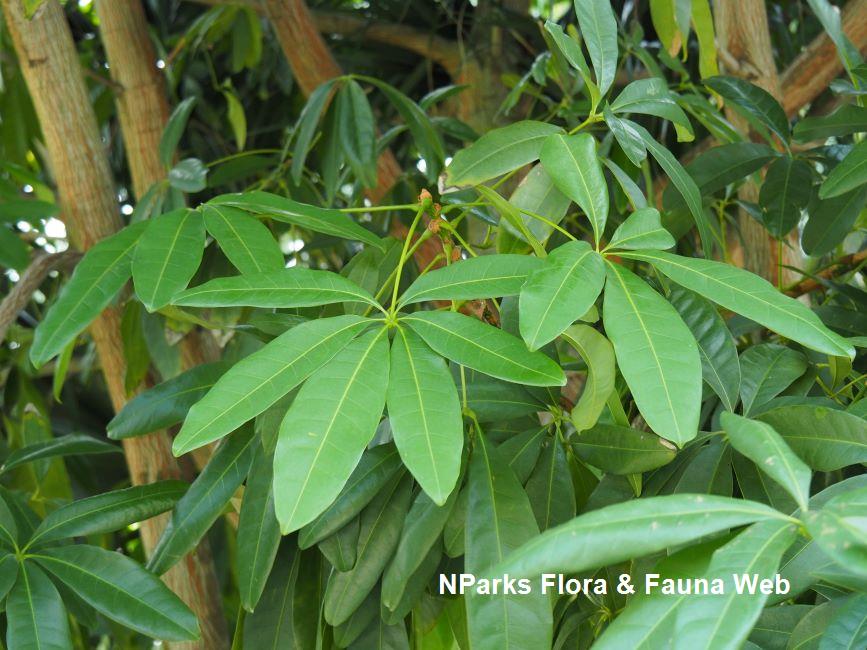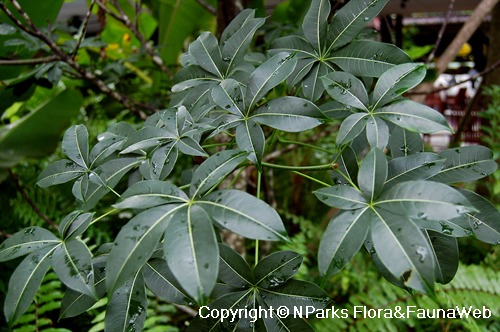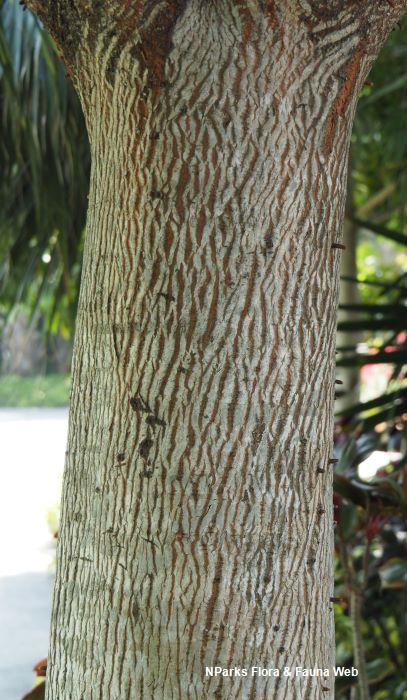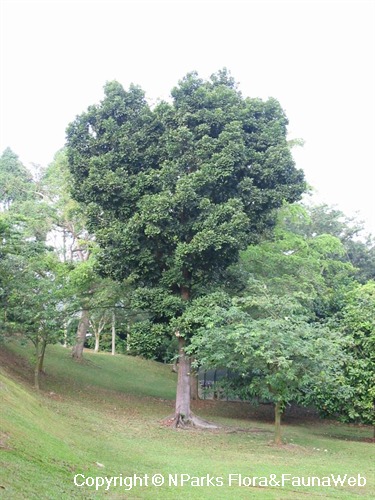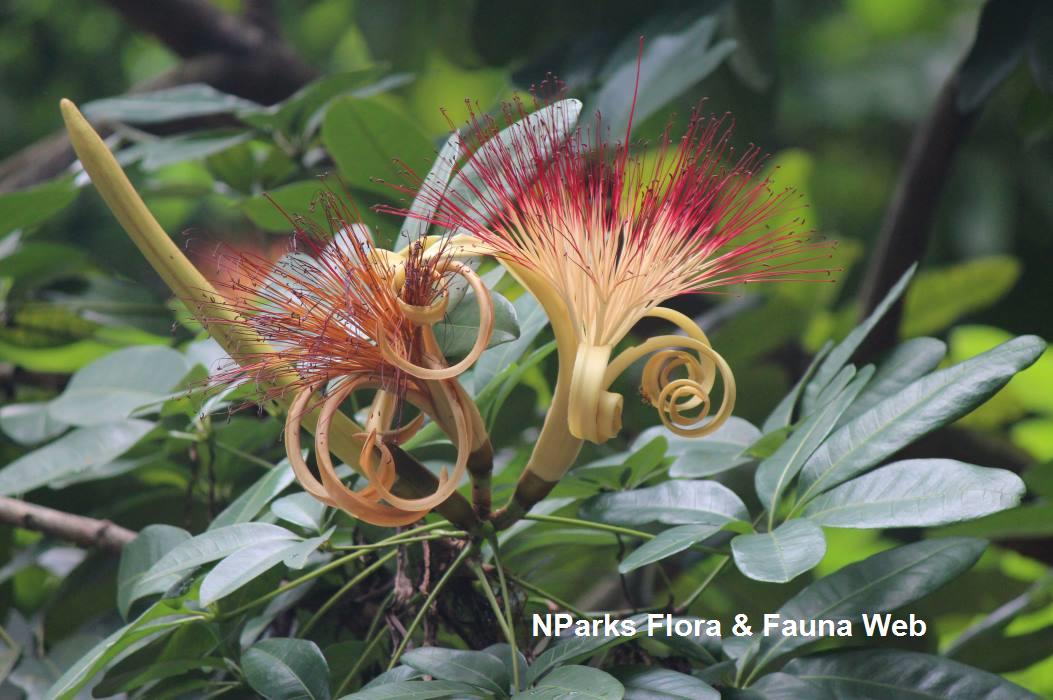
Back
Pachira aquatica Aubl.
| Family Name: | Malvaceae |
| Synonyms: | |
| Common Name: | Guiana Chestnut, Provision Tree, Shaving-brush Tree, Malabar Chestnut, Water Chestnut, Saba Nut, Fortune Tree, Money Tree, Oje, 瓜栗, 马拉巴栗, 发财树 |
Name
Classifications and Characteristics
| Plant Division | Angiosperms (Flowering Seed Plants) (Dicotyledon) |
|---|---|
| Plant Growth Form | Tree |
| Lifespan (in Singapore) | Perennial |
| Mode of Nutrition | Autotrophic |
| Plant Shape | Rounded |
| Maximum Height | 15 m to 20 m |
Biogeography
| Native Distribution | Central America, South America |
|---|---|
| Native Habitat | Terrestrial (Riverine) |
| Preferred Climate Zone | Tropical |
| Local Conservation Status | Non-native |
Description and Ethnobotany
| Others - Plant Morphology | Medium-sized tree, 15 - 20m height. Crown rounded and bushy in mature trees, with whorled branching (especially when young).Leaves palmate, with 5-11 leaflets. Flower buds solitary, cylindrical and erect, with linear creamy-yellow petals (20 - 30cm long) that peel back to reveal showy powderpuff flowers with pink-tipped white to yellowish-orange stamens. Fruits large egg-shaped woody capsules (30cm by 13cm wide), maturing to brown and splitting to disperse edible seeds that resemble Castanea sativa (Sweet Chestnut) or peanuts in flavour.Native to freshwater swamps, riverbanks, estuaries and lakesides, tolerant of water-logged soils and may develop stilt roots in flooded sites. Suitable as parkland tree to provide dense shade, and can be closely planted as hedge. Easy to grow, very tolerant of poor indoor light and drought, often sold as potted houseplant (with trade name Money Tree) with single swollen trunk, or as multiple plants (normally 5) with braided trunks. |
|---|---|
| Ethnobotanical Uses | Edible Plant Parts : Edible Leaves, Edible Seeds Food (Herb or Spice) (Fruit or Vegetable) Others: Seeds can be toasted and grinded to make a chocolate-like beverage, or into a flour to make bread. Young flowers and leaves may be cooked and eaten like a vegetable. Regarded as feng shui plant in East Asia and popularly grown as indoor potted or bonsai-like plant for good luck. |
Landscaping Features
| Desirable Plant Features | Ornamental Flowers |
|---|---|
| Landscape Uses | Container Planting, Interiorscape/ Indoor Plant, General, Riverine, Shade Providing Tree / Palm, Hedge / Screening |
| Thematic Landscaping | Water Garden, Naturalistic Garden |
Plant Care and Propagation
| Light Preference | Semi-Shade, Full Sun |
|---|---|
| Water Preference | Moderate Water, Lots of Water |
| Plant Growth Rate | Moderate |
| Rootzone Tolerance | Waterlogged Soils (Drains Site), Easy to Grow |
| Maintenance Requirements | Moderate |
| Propagation Method | Seed, Stem Cutting |
Foliar
| Foliage Retention | Evergreen |
|---|---|
| Mature Foliage Colour(s) | Green |
| Mature Foliage Texture(s) | Smooth |
| Foliar Type | Compound (Palmate) |
| Foliar Arrangement Along Stem | Alternate |
| Foliar Shape(s) | Non-Palm Foliage (Lanceolate, Elliptical, Oblong) |
| Foliar Venation | Pinnate / Net |
| Foliar Margin | Entire |
| Foliar Apex - Tip | Acuminate |
| Typical Foliar Area | Mesophyll ( 45cm2 - 182.25 cm2 ) |
| Leaf Area Index (LAI) for Green Plot Ratio | 4.0 (Tree - Dense Canopy) |
Non - Foliar and Storage
| Trunk Type (Non Palm) | Woody |
|---|---|
| Bark Colour(s) | Grey |
| Mature Bark Texture | Cracked |
| Stem Type & Modification | Woody |
| Root Type | Underground (Tap Root, Fibrous Root) |
Floral (Angiosperm)
| Flower & Plant Sexuality | Bisexual Flowers |
| Flower Colour(s) | Cream / Off-White, Pink, White, Yellow / Golden |
|---|---|
| Flowering Habit | Polycarpic |
Fruit, Seed and Spore
| Mature Fruit Colour(s) | Brown, Yellow / Golden |
|---|---|
| Fruit Classification | Simple Fruit |
Image Repository
Others
| Master ID | 1752 |
|---|---|
| Species ID | 3045 |
| Flora Disclaimer | The information in this website has been compiled from reliable sources, such as reference works on medicinal plants. It is not a substitute for medical advice or treatment and NParks does not purport to provide any medical advice. Readers should always consult his/her physician before using or consuming a plant for medicinal purposes. |



